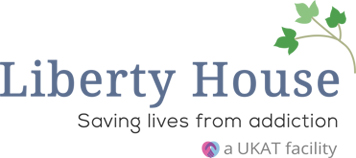
Written by:

Medically Reviewed by:
Last Updated:
February 17th, 2025
Tramadol Addiction
What is tramadol?
Tramadol is a prescription painkiller used to treat moderate to severe pain. It’s classified as an opioid analgesic, which means it works by changing the way the brain responds to pain signals. Doctors often prescribe it for conditions like post-surgery discomfort or chronic pain from injuries.
In the UK, tramadol is a controlled substance under the Misuse of Drugs Act, meaning it’s only legally available through prescription. While effective, it carries the risk of dependence, so it’s usually prescribed with caution and for short-term use.
Is tramadol addictive?
Tramadol can be addictive. It’s a painkiller often prescribed for moderate to severe pain, but it works in a way that can lead to dependence. Tramadol affects the brain by binding to opioid receptors, reducing the sensation of pain. It also increases the levels of serotonin and norepinephrine, two chemicals linked to mood and pain regulation.
Because of how it works, the body can quickly get used to it, making it less effective over time. This can lead to taking more to achieve the same relief, increasing the risk of addiction. The brain begins to rely on tramadol to feel good, and stopping it suddenly can cause withdrawal symptoms like anxiety, sweating and nausea. This cycle of tolerance and withdrawal is what makes tramadol addictive.
Tramadol in the UK
Recent statistics released in early 2024 highlight growing concerns around tramadol-related deaths in the UK. From 1996 to 2022, the number of deaths due to tramadol poisoning in England and Wales has risen significantly. While the early years saw relatively low figures, a sharp increase started around 2006, peaking in 2014 with 240 deaths.
Though there’s been a slight decline since that peak, the numbers remain alarmingly high, with 2022 marking the second-highest on record.
Source: Statista
This trend suggests that tramadol addiction is still a major issue, possibly linked to over-prescription or a lack of support for those struggling with dependency. The data reinforces the risks and dangers of tramadol use, underscoring the importance of addressing this growing problem.
How can a tramadol addiction begin?
It can be confusing to think that a prescription drug like tramadol, which is regulated by a doctor, can become addictive. After all, it’s designed to help people manage pain and is usually given in a controlled setting. However, tramadol is an opioid, and there are quite a few ways a person can develop an addiction to it, and a lot of the time, it isn’t intentional. Understanding how this can happen is key to preventing or addressing a potential addiction.
Increasing dosage without doctor’s approval
Over time, the body can build a tolerance to tramadol, meaning that the prescribed dosage may no longer provide the same level of pain relief. When this happens, some people might increase their dosage without consulting their doctor, believing it to be harmless. This misuse can quickly lead to dependence and, eventually, addiction as the body craves higher doses for the same effect.
Using tramadol for emotional relief
While tramadol is prescribed for physical pain, some individuals may start using it to cope with emotional or psychological distress. tramadol has mood-lifting properties due to its effects on serotonin and norepinephrine levels. This can make it appealing for those going through stress, anxiety or depression, and repeated use for these reasons can lead to psychological dependence.
Not following the prescribed schedule
Some people may not follow the prescribed schedule of tramadol intake, either by taking doses too frequently or continuing the medication beyond the prescribed duration. This mismanagement can lead to the body becoming reliant on the drug, as consistent and prolonged use increases the risk of dependence.
Taking someone else’s prescription
There are cases where people take tramadol that was prescribed for someone else, thinking it’s a quick solution for their pain or discomfort. However, without proper medical guidance, this kind of use can be dangerous and increase the likelihood of developing a dependency, especially since the body may react differently to the dosage than intended by a doctor.
Prolonged use due to chronic pain
Individuals with chronic pain may be prescribed tramadol for long-term use. While it is meant to help manage pain, long-term use can increase the risk of physical dependence as the body becomes accustomed to the drug. In such cases, even those who follow their doctor’s instructions carefully may find it difficult to stop taking tramadol without experiencing withdrawal symptoms.
Recreational misuse
While less common, some people may misuse tramadol recreationally for the euphoric or calming effects it provides. Recreational use significantly increases the risk of addiction, as the drug is being taken in ways not intended by a doctor, often in higher doses or alongside other substances to enhance its effects.
What are the signs of tramadol addiction?
Recognising the signs of tramadol addiction is crucial to help yourself or those around you seek support early on. Addiction to tramadol can develop gradually, making it essential to stay vigilant for the subtle and more obvious signs. Spotting these signs in a loved one could be the first step toward getting them the help they need to regain control of their life.
Here are the main signs of tramadol addiction:
- Increasing tolerance: needing higher doses to achieve the same pain relief or effects.
- Doctor shopping: visiting multiple doctors to get more tramadol prescriptions (common in countries with privatised healthcare).
- Neglecting responsibilities: failing to meet obligations at work, school or home.
- Social withdrawal: distancing oneself from friends and family or losing interest in activities once enjoyed.
- Cravings: feeling a constant urge or need to take tramadol.
- Withdrawal symptoms: experiencing irritability, anxiety, sweating or nausea when not taking the drug.
- Continued use despite harm: persisting with tramadol even when it’s causing problems in personal or professional life.
If you recognise these signs in yourself or someone close to you, it’s important to reach out for help immediately.
Can Liberty House help with a tramadol addiction?
Liberty House offers a dedicated tramadol addiction treatment programme designed to support those struggling with dependency.
Our approach includes a thorough initial assessment, followed by a medically supervised detox to manage withdrawal symptoms safely. After detox, we provide a range of therapies such as one-to-one counselling, group sessions and holistic treatments like yoga and art to help rebuild a balanced life. We also offer aftercare to ensure ongoing support beyond treatment.
If you or a loved one is battling tramadol addiction, please don’t hesitate to reach out – we’re here to help you every step of the way.
Frequently Asked Questions
(Click here to see works cited)
- Stewart, Conor. “Tramadol Drug Poisoning Deaths 1996-2022.” Statista, 13 Feb. 2024, www.statista.com/statistics/470898/death-by-Tramadol-drug-poisoning-in-england-and-wales/.








